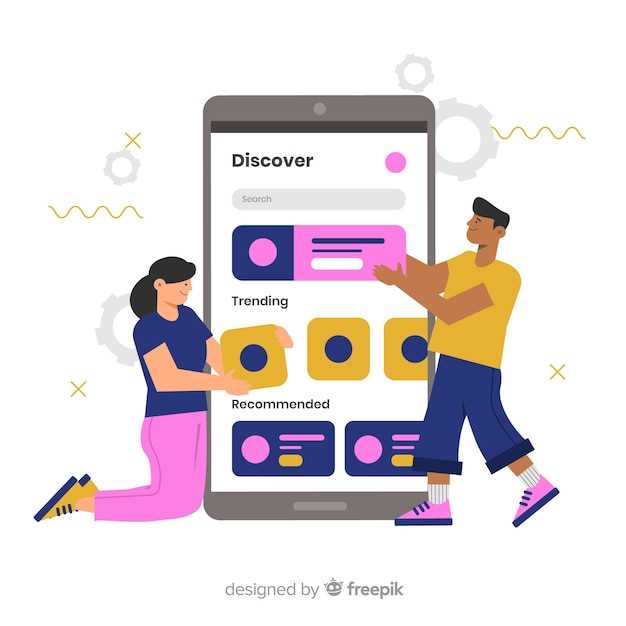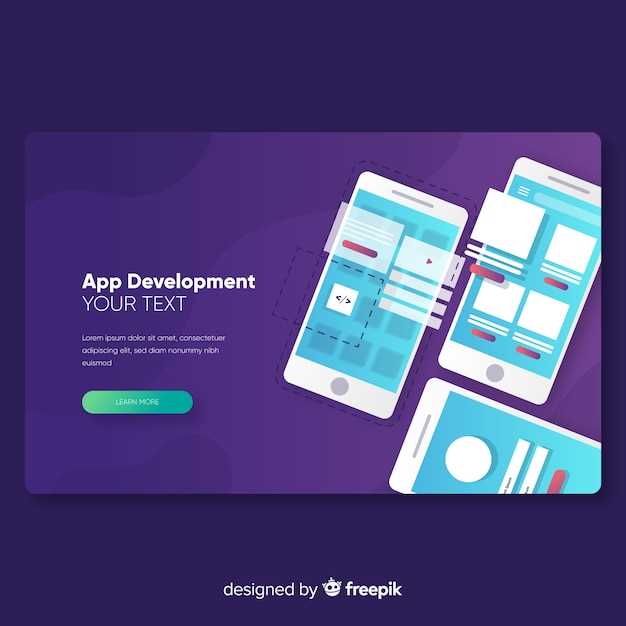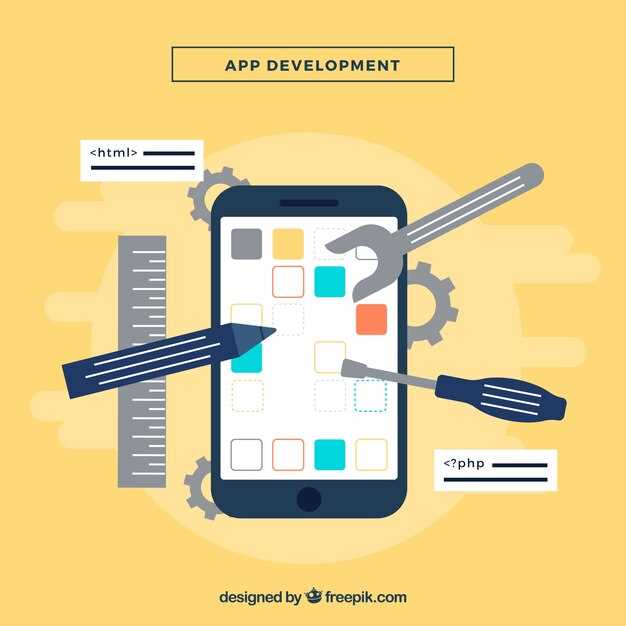In the realm of digital tools, creating an appealing interaction is crucial. Today’s users hold high expectations. Their satisfaction often determines an application’s success. Thus, the focus must shift to how individuals engage with technology. Every detail counts, from the interface to overall functionality.
Organizations must prioritize thoughtful design and intuitive navigation. Engaging users right from the start can drastically change their perception. A well-crafted journey invites exploration. It encourages returning visits and fosters loyalty. When developers fully embrace this mindset, they pave the way for remarkable transformations.
Achieving this goal requires a profound understanding of user behavior and needs. Analyzing feedback and conducting research builds a strong foundation. This information drives decision-making and shapes future enhancements. As teams traverse the design process, they must remain vigilant. Every choice holds the potential to captivate or alienate an audience.
In an age where competition is fierce, standing out becomes paramount. Clear, concise communication is more important than ever. Users crave efficiency and style in equal measure. As one navigates through the intricacies of creation, fostering a seamless interaction is essential to ensure lasting connections.
Improving User Engagement in Mobile Apps

Creating compelling interactions is crucial for keeping individuals interested in your software. When users feel connected, they are more likely to return. Engagement isn’t just about aesthetics; it’s about fostering a relationship. Features should resonate with their needs and expectations. Users crave personalized experiences that make them feel seen and heard.
Interactivity is key. Gamification elements can spark interest. Think rewards, challenges, and badges. Notifications should be timely, relevant, and not intrusive. Implement features that promote social sharing to cultivate a community around the application.
Understanding user behavior is essential for refining content and functionality. Lengthy surveys can be overwhelming; try quick polls instead. Users appreciate when their feedback leads to actionable changes within the platform. An iterative approach ensures your offering evolves with user needs, keeping them engaged.
Consider the journey of your audience. Every interaction should feel purposeful. Streamlined navigation and intuitive controls can reduce frustration. Individuals often abandon applications that require excessive effort to understand or use. Personalization can have a transformative effect, turning routine actions into memorable moments.
Incorporate visual storytelling where applicable. A captivating narrative, paired with stunning graphics, can leave a lasting impression. Moreover, users love to share their experiences; encourage this behavior through shareable content. Don’t forget to analyze engagement metrics regularly. This will reveal what resonates and what falls flat.
Understanding User Needs and Expectations

Grasping what users truly want is essential for any digital creation. These insights shape the overall design and functionality. Every interaction should feel personal and effortless. It’s a matter of listening, observing, and adapting. When developers focus on real-world challenges, solutions become clearer.
People approach technology with specific desires and frustrations. They seek efficiency and simplicity. Their goals often include saving time or gaining information quickly. By identifying common themes, one can gather invaluable data. This deep understanding fosters a connection between the application and its users.
Consider conducting surveys to gather feedback from potential individuals who might utilize the service. Engaging with users through interviews or focus groups often reveals unexpected insights. It’s in these conversations that developers discover what resonates. Observing how people interact with existing products can also shed light on their preferences. Patterns in behaviors emerge, guiding future design choices.
Creating personas can be a game-changer. They represent different segments of the audience, illustrating varied needs. Cater to these diverse profiles by tailoring features accordingly. Recognizing specific challenges faced by potential users can lead to innovative solutions. Often, the smallest adjustments yield the most significant impacts.
In the digital landscape, assumptions can be misleading. Instead of relying on gut feelings, always validate ideas with data. An iterative approach that values feedback can ensure that developments remain relevant. Anticipating frustrations and addressing them proactively is crucial. Only then can a strong relationship with the audience be forged.
Conducting Effective User Research
Understanding the needs and preferences of your audience is crucial. Gathering insights can significantly influence the success of your project. This process goes beyond surveys and interviews. It involves deep engagement with potential users. By immersing yourself in their world, you can uncover valuable information.
Start with clear objectives. Identify what you want to learn. Use a mix of qualitative and quantitative methods. Observational studies, focus groups, and usability tests can yield rich insights. Each technique offers a unique perspective on user behavior and motivations.
When conducting interviews, create a comfortable environment. This encourages honesty and open discussion. Ask open-ended questions to promote detailed responses. Be an attentive listener, showing genuine interest. Engage with their experiences, feelings, and frustrations.
Don’t overlook data analytics. Tracking user interactions can reveal patterns and trends. Analyzing metrics helps in understanding what works well and what doesn’t. Combine this with qualitative research for a comprehensive view. The right balance can lead to actionable recommendations.
Involve stakeholders throughout the process. Sharing findings fosters collaboration and encourages diverse viewpoints. Engaging team members can enhance the research quality. This collective effort often results in innovative solutions that might not have emerged otherwise.
User research is not a one-time task. Make it an ongoing effort to stay aligned with audience needs. As preferences evolve, continuous feedback helps in adapting your approach. Staying attuned to these changes ensures relevance. Remember, a deep understanding fosters trust and loyalty.
Gathering Feedback for Continuous Improvement
Listening to your audience is essential for refining your product. Each comment, suggestion, or criticism can provide invaluable insights. Users often discover issues that developers may overlook. Their firsthand experiences guide future decisions. Continuous engagement with your community can create a cycle of enhancement.
Setting up channels for feedback can be simple yet effective. Surveys and polls are a great start. Encourage users to share their thoughts openly. Implementing in-app feedback forms encourages real-time responses.
Beyond straightforward inquiries, consider engaging users in discussions. Hosting forums fosters a sense of community. Listening actively can lead to exciting innovations. When people feel heard, they contribute more.
Every piece of feedback has value; even negative comments can illuminate hidden problems. Prioritize areas that resonate with many users–they often reflect common pain points. Analyzing this data, along with user behavior analytics, offers a comprehensive perspective. Over time, adapting to these insights not only resolves current issues but also anticipates future needs.
Don’t forget to communicate the changes made from user suggestions back to the audience. Transparency builds trust and encourages further input. Users want to know their opinions matter. When they see positive transformations, it strengthens their connection to the platform.
Ultimately, gathering and acting on feedback is a journey, not a destination. A responsive approach creates a dynamic ecosystem for all involved. Regularly revisiting this process ensures your direction aligns with users’ evolving expectations.
Key Principles of Effective UX Design

Creating a delightful interface is crucial for any project. It spans various aspects, from aesthetics to functionality. Every detail matters, no matter how small. This is where foundational concepts come into play, guiding designers to make informed decisions. Effective design simplifies processes and provides satisfaction.
- Clarity: Prioritize straightforward navigation and informative content.
- Consistency: Maintain uniformity throughout the design to build familiarity.
- Feedback: Provide users with instant responses to their interactions.
- Accessibility: Ensure all users can access features, regardless of their abilities.
- Usability: Focus on intuitive controls that require minimal learning.
By adhering to these principles, designers can create products that resonate well with their audience, encouraging deeper engagement and fostering long-lasting relationships with their creations. Additionally, the balance between functionality and aesthetics must be carefully considered, ensuring that every component contributes to the overall goal of satisfaction and usability.
- Empathy: Understand your users’ needs and challenges.
- Context: Design for the specific situation in which it will be used.
- Performance: Optimize speed and responsiveness to enhance interaction flow.
Ultimately, these core tenets pave the way for crafting solutions that not only fulfill requirements but also leave a lasting impression. When people find joy in utilizing a design, it’s a testament to its effectiveness and relevance in a fast-evolving digital landscape.
Consistent Navigation and Layout
Having a familiar structure within an interface is crucial for ease and comfort. Users should feel at home as they interact with the elements on-screen. This sense of familiarity encourages confidence and fluidity in tasks. A well-organized layout allows for quick comprehension of functionality. Anything less can lead to frustration and confusion.
Consistency in placement, style, and behavior of navigational components can significantly impact how individuals interact with your platform. Essential buttons should be easily identifiable and located where users expect them to be. When a person doesn’t have to guess where to find a feature, they can devote their cognitive load to accomplishing tasks instead. This prompts a more enjoyable interaction and reduces potential errors. On the contrary, an erratic layout creates a chaotic environment that breeds uncertainty.
When designing navigation, ensure it remains uniform across different sections. This involves using a cohesive color palette, similar font styles, and consistent iconography. Always aim for an intuitive flow where users can predict what will happen next based on their previous interactions. A disjointed approach to these elements not only disrupts the visual harmony but can also derail a user’s intended journey through your service.
| Key Elements | Description |
|---|---|
| Layout Structure | Maintaining a grid-based design helps in organizing elements neatly. |
| Color Consistency | Using a limited palette strengthens brand identity and visual coherence. |
| Icon Usage | Employing universally recognized icons aids in quicker recognition. |
| Responsive Design | Ensuring functionality across various devices prevents navigation issues. |
Ultimately, delivering a streamlined navigation and layout is about crafting a serene digital space where exploration feels natural. By adhering to these principles, you propel individuals toward their objectives seamlessly while fostering a sense of trust and reliability in your service. Every interaction should feel intuitive, as if the path had been paved thoughtfully for them.
Importance of Visual Hierarchy
Visual hierarchy plays a crucial role in guiding attention. It influences how users interpret information and navigate through a platform. When designed thoughtfully, it makes content more accessible. A clear structure can transform an ordinary interface into an intuitive one. It’s all about prioritizing elements effectively.
Consider how you read a page. The most important items catch your eye first. Size, color, and placement can emphasize key aspects. These elements work together to create focus. A well-organized layout minimizes confusion and enhances understanding.
- Size: Bigger items draw more attention.
- Color: Bright hues can highlight critical information.
- Position: Top of the screen is often where users look first.
- Contrast: High contrast improves readability and focus.
When done right, users instinctively know what to look for, allowing them to make informed decisions quickly, enhancing their interaction with the platform. Poorly organized information can lead to frustration, often resulting in users abandoning a task altogether and leading to a loss of engagement.
- Identify key messages you want to communicate.
- Use varying text sizes to show importance.
- Group related items together for better flow.
- Add whitespace strategically to breathe life into design.
Establishing a strong visual hierarchy not only improves clarity but can also elevate the overall appeal. This influences how users perceive value, and it ultimately leads to higher satisfaction rates. Consistency in applying these principles fosters familiarity and ease of use, allowing users to feel in control while navigating through the content presented to them.
Utilizing Familiar Design Patterns
When creating a digital product, it’s essential to draw from established visual frameworks. These patterns streamline navigation and enrich engagement, making the interface intuitive. Users often favor what they recognize. This familiarity breeds comfort. A consistent design approach leads to quicker adaptation.
Incorporating recognizable elements is not merely a convenience; it fosters trust. Users feel more secure when they encounter familiar structures. They don’t need to rethink or relearn how to interact with the system. This ultimately results in a fluid trajectory through the content. Repetition of known layout and interaction styles can significantly minimize cognitive load.
- Adopt standard navigation bars
- Utilize well-known iconography
- Employ established button styles
- Implement predictable gestures
Even if innovation drives the industry, users often appreciate reliability alongside creativity. Presenting features in an expected manner allows users to focus on the tasks at hand. This combined strategy of familiarity with innovation can lead to remarkable outcomes. In this context, leveraging common design frameworks is not just logical, but crucial for success.
- Analyze competitor interfaces.
- Identify patterns that work effectively.
- Test these patterns with your audience.
- Iterate based on feedback.
By adopting these approaches, you can create an environment that feels known yet fresh, ensuring that both seasoned and new users find joy in interaction while navigating through your platform.
Strategies for Optimizing App Usability
Creating a seamless application is fundamental for ensuring satisfaction among users. To achieve this, several approaches can enhance interactions. Each decision made during the design phase profoundly influences overall satisfaction. Therefore, careful attention to detail is crucial.
- Focus on intuitive navigation.
- Streamline tasks to reduce complexity.
- Ensure accessibility for diverse user groups.
- Implement responsive design across various devices.
Building an application that feels natural and easy to use often requires putting oneself in the shoes of potential users. Discovering and understanding their preferences can guide important design choices. For instance, the organization of content should feel logical and flow naturally, promoting efficiency while minimizing frustration.
- Conduct user testing frequently.
- Analyze feedback and make necessary adjustments.
- Prioritize finger-friendly touch targets for interaction.
Reducing cognitive load is another critical consideration; when users can digest information more easily, they are far more likely to engage effectively. An overloaded interface can deter exploration and usage. Instead, thoughtfully curated content helps direct attention where it’s needed without overwhelming anyone.
- Use legible fonts that are easy to read at a glance.
- Incorporate visual hierarchy to guide users sequentially.
- Avoid excessive animations that disrupt flow.
Moreover, integrating consistent design patterns fosters familiarity, simplifying navigation throughout the entire application, and therefore, allowing users to focus on their primary objectives rather than figuring out how to interact with each element.
Video:
What Are the Best Practices for Mobile UX Design?
What Are the Best Practices for Mobile UX Design? by Coders 6 views 3 months ago 3 minutes, 20 seconds
Q&A:
How important is user feedback in the mobile app development process?
User feedback is crucial in the mobile app development process. It helps developers understand their users’ experiences, pinpointing areas for improvement. By gathering feedback through surveys, app store reviews, and user testing sessions, developers can gather insights on how users interact with the app and what features they find beneficial or frustrating. Implementing user feedback not only improves the current app version but also guides future updates and new features. This iterative approach ensures that the product continually meets user expectations, resulting in higher satisfaction and retention rates.




